
This is a book about Phylogenetic Comparative Methods by Luke J. Harmon.
- Subject:
- Genetics
- Natural Science
- Material Type:
- Textbook
- Author:
- Luke J. Harmon
- Date Added:
- 10/26/2023

This is a book about Phylogenetic Comparative Methods by Luke J. Harmon.
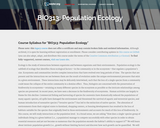
Population ecology is the subfield of ecology that identifies those ecological factors--in the community or in the ecosystem--that regulate a population's size. The student will learn about intrinsic population growth and discover how such growth can be quantified, along with the factors that inhibit growth. Also, the student will apply his or her understanding of population ecology to determine a population's current status and construct a management plan to maintain population size. Upon successful completion of this course, students will be able to: explain how population ecology is used to address problems in evolution, conservation, epidemiology, and resource management; describe the interactions among and between the biotic and abiotic components of a healthy ecosystem and explain how these components are interdependent; identify factors that threaten the maintenance of biodiversity in ecosystems and the population measures used to sustain ecosystem biodiversity; use mathematical models and equations to describe population growth and interaction between populations; identify density-dependent and density-independent factors that affect population growth and regulation; employ the principles and techniques of population dynamics and ecology to analyze population viability and develop a resource management plan by using data gathered from a sample population. (Biology 313)
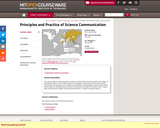
Develop skills as science communicators through projects and analysis of theoretical principles. Case studies explore the emergence of popular science communication over the past two centuries and consider the relationships among authors, audiences and media. Project topics are identified early in the term and students work with MIT Museum staff. Projects may include physical exhibits, practical demonstrations, or scripts for public programs.
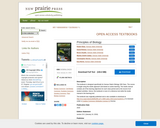
This textbook is designed specifically for Kansas State's Biology 198 Class. The course is taught using the studio approach and based on active learning. The studio manual contains all of the learning objectives for each class period and is the record of all student activities. Hence, this textbook is more of a reference tool while the studio manual is the learning tool.
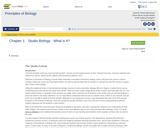
This textbook is designed specifically for Kansas State's Biology 198 Class. The course is taught using the studio approach and based on active learning. The studio manual contains all of the learning objectives for each class period and is the record of all student activities. Hence, this textbook is more of a reference tool while the studio manual is the learning tool.
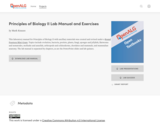
This laboratory manual for Principles of Biology II with ancillary materials was created and revised under a Round Fourteen Mini-Grant. Topics include evolution, bacteria, protists, plants, fungi, sponges and jellyfish, flatworms and nematodes, mollusks and annelids, arthropods and echinoderms, chordates and mammals, and mammalian anatomy. The lab manual is separated by chapters, as are the PowerPoint slides and lab quizzes.

Psychology is designed to meet scope and sequence requirements for the single-semester introduction to psychology course. The book offers a comprehensive treatment of core concepts, grounded in both classic studies and current and emerging research. The text also includes coverage of the DSM-5 in examinations of psychological disorders. Psychology incorporates discussions that reflect the diversity within the discipline, as well as the diversity of cultures and communities across the globe.Senior Contributing AuthorsRose M. Spielman, Formerly of Quinnipiac UniversityContributing AuthorsKathryn Dumper, Bainbridge State CollegeWilliam Jenkins, Mercer UniversityArlene Lacombe, Saint Joseph's UniversityMarilyn Lovett, Livingstone CollegeMarion Perlmutter, University of Michigan


By the end of this section, you will be able to:
Explain the basic principles of the theory of evolution by natural selection
Describe the differences between genotype and phenotype
Discuss how gene-environment interactions are critical for expression of physical and psychological characteristics
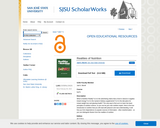
What Is Nutrition Reality? Is it in the advertising claims that a food is natural or supplies instant energy? Is it in the myriad of dietary supplements? Is it in the diet plans for instant weight loss and glowing health? The only way to find out is to learn the basic principles of nutrition science, so you can be your own nutrition expert. Here is the true introduction to nutrition that you will read with pleasure and real understanding. It will free you from dependence on popular sources of information - often misinformation - so you can distinguish illusion from the realities of nutrition.
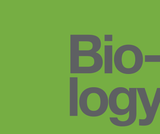
This is a review of an OER biology textbook.This resource was reviewed by Dr. Achim D. Herrmann (Department of Geology and Geophysics, LSU).This resource is available here: https://louis.oercommons.org/courseware/6
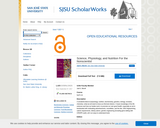
For the course NUFS 016: Science, Physiology, and Nutrition
A wonderful blend of physiology, nutrition, biochemistry, genetics, biology, evolution, chemistry--what we all need to know as informed citizens. A basic knowledge of the life sciences and how our bodies work--to promote our own good health, especially as we're bombarded with misleading advertisements, soundbites, and the like. DNA fingerprinting, calorie requirements, dietary advice, genetic engineering (including gene editing with CRISPR cas9)--all in an easy-to understand book.
This course provides an introduction to life sciences, from chemistry to cellular and physiologic functions, with nutrition as an underlying theme. Interactions with environment, including effect of culture, genetics, and nutrition on susceptibility to disease. Applications of biotechnology in the life sciences.
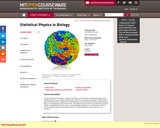
Statistical Physics in Biology is a survey of problems at the interface of statistical physics and modern biology. Topics include: bioinformatic methods for extracting information content of DNA; gene finding, sequence comparison, and phylogenetic trees; physical interactions responsible for structure of biopolymers; DNA double helix, secondary structure of RNA, and elements of protein folding; considerations of force, motion, and packaging; protein motors, membranes. We also look at collective behavior of biological elements, cellular networks, neural networks, and evolution.

This course analyzes cooperative processes that shape the natural environment, now and in the geologic past. It emphasizes the development of theoretical models that relate the physical and biological worlds, the comparison of theory to observational data, and associated mathematical methods.

Personality psychology is the study of the development of personality, the effects of personality on important outcomes, and maladaptive personality characteristics. Upon successful completion of this course, the student will be able to: Identify research methodologies involved in the science of personality psychology; Describe the purpose of comprehensive clinical theories in the field of personality psychology; Compare and contrast major classical theories of personality (i.e., humanism, psychoanalytic/psychodynamic, behaviorism, cognitive, and social-cognitive theories of personality); Describe the main concerns of trait theorists, the influential figures who helped develop this perspective, and the sequential development leading up to the current understanding of traits; Define the main components of the five-factor model of personality; Identify the theory, methodology, and main findings of the empirical journal articles assigned; Describe the important contributions of the biological/evolutionary perspective made to personality psychology; Describe the intrapersonal and interpersonal function of emotion as an expression of personality. (Psychology 405)
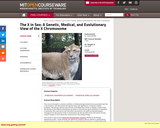
" This course will explore a diverse collection of striking biological phenomena associated with the X chromosome. We will examine the genetic basis and significance of several X-linked mutations. We will also discuss why men are more likely than women to display X-linked traits. We will look at the different mechanisms by which X chromosome gene expression is equalized in mammals, flies, and worms and how these mechanisms can yield unusual phenotypes. Throughout our discussions of the X chromosome we will use both recent and classic primary research papers to learn about this chromosome's fascinating biology. This course is one of many Advanced Undergraduate Seminars offered by the Biology Department at MIT. These seminars are tailored for students with an interest in using primary research literature to discuss and learn about current biological research in a highly interactive setting. Many instructors of the Advanced Undergraduate Seminars are postdoctoral scientists with a strong interest in teaching."